ESO Outreach Partner Organisations*
ESO Outreach Partner Organisations (EOPO) are members of an exclusive partnership initiated by the European Southern Observatory to recognise the efforts of selected planetariums, science centres and other informal educational institutions. These are organisations which collaborate regularly with ESO’s Department of Communication on informal education and outreach projects, events or campaigns. Examples include the GigaGalaxy Zoom project and Hubble’s 15th and 20th anniversary activities.
The growing list of Outreach Partner Organisations is also a means through which ESO can stay connected with its partner organisations and increase the outreach synergy between them and ESO. Last but not least, it is an opportunity that will help to enhance the reputation of all partners and increase the visibility of their outreach and educational activities.
EOPO members receive a series of benefits, including free or discounted ESO products, access to relevant and timely information, visibility on eso.org and other community channels, networking with other local ESO representatives or partners and much more.
*2018 Update: Please note that currently this network is no longer being expanded.
Current ESO Outreach Partner Organisations:
- Instituto de Astrofísica e Ciências do Espaço (IA)
- The Bayfordbury Observatory
- Blackrock Castle Observatory
- Navegar Foundation – Centro Multimeios Espinho
- Eugenides Planetarium
- Tycho Brahe Planetarium
- Ars Electronica Center
- Zeiss Planetarium Bochum
- Hamburg Planetarium
- Royal Observatory Greenwich
- Vienna Planetarium
- The Technical Museum of Vienna
- Centro de Astrofísica da Universidade do Porto
| Instituto de Astrofísica e Ciências do Espaço (IA), Lisbon, Portugal |
|

|
The Instituto de Astrofísica e Ciências do Espaço (IA) is a research infrastructure with a national dimension, embodying a bold vision for the development of astronomy, astrophysics and space sciences in Portugal. It fosters research with the highest impact in the field of astrophysics and space sciences and supports the teaching and training of young researchers and students in close collaboration with the Universities of Lisbon and Porto.
IA promotes wide-ranging science communication activities that enhance public understanding of the Universe and our place in it, as well as awareness of the importance of research in this field. With its activities in schools and public spaces, exhibitions, planetarium sessions and astronomical observations, among others, IA reaches more than 60 000 people per year. The Science Communication group at IA, together with its partners, develops projects on a national and international scale in the field of astronomy and space sciences communication and education.
|
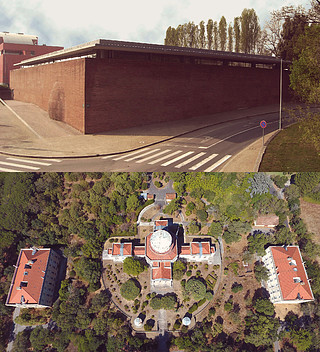 |
| The Bayfordbury Observatory, University of Hertfordshire, United Kingdom |
|

|
Set in 150 hectares of English countryside, the Bayfordbury Observatory — University of Hertfordshire, is one of the finest teaching observatories in the UK and one of the largest robotic observatories in Europe, with five of its seven telescopes being fully automated robotic instruments, capable of operating without human intervention.
In addition to teaching and research, the Observatory has an extensive public outreach programme. Visits to the Observatory, whether as part of a public open evening or a bespoke group visit, include a show in the HD planetarium, interactive activities, talks by working scientists, a tour of the site and, depending on weather, a look through the telescopes.
|
 |
| Blackrock Castle Observatory, Cork, Ireland |
|

|
Blackrock Castle was originally built on Cork’s river Lee in 1582 as a watchtower and fort.
In an exciting collaboration between Cork City Council and the Cork Institute of Technology, Blackrock Castle re-opened in 2007 as Blackrock Castle Observatory (BCO), the Space for Science.
Cosmos at the Castle is the onsite internationally award-winning interactive astronomy exhibit. Blackrock Castle is also home to BCO Labs, an active observatory; the close integration of the public exhibition and the laboratories makes BCO a unique centre for research, education & public engagement. BCO has recently added an offsite 32-metre radio dish to its outreach fleet.
|
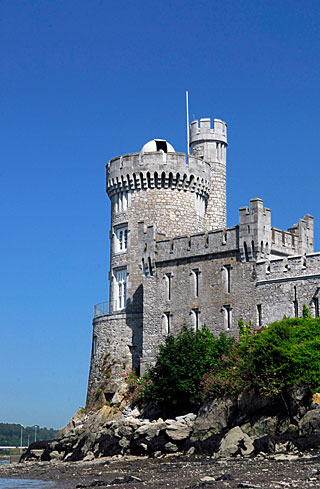 |
| Navegar Foundation – Centro Multimeios Espinho, Portugal |
|
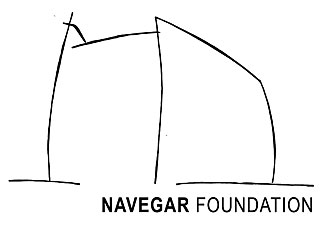
|
Founded in 2000, the Navegar Foundation is an institution dedicated to the promotion of culture, arts and science. It manages the Centro Multimeios Espinho, an iconic building in the city of Espinho, Portugal, where visitors can find a planetarium, an exhibition gallery, a library and an astronomical observatory. The planetarium has played an important role over the years, as special attention has been given to schools to complement the formal educational programme. The Navegar Foundation’s activities include producing and directing planetarium shows, organising educational workshops for students and teachers, as well as producing exhibitions and educational materials.
|
 |
| Eugenides Planetarium, Athens, Greece |
|

|
The Eugenides Planetarium first opened its doors to the Greek public on 7 June 1966. For 33 years, thanks to its Zeiss Mark IV projector, hundreds of thousands of visitors were “edutained”, until it was realised that a total overhaul was necessary, one that would expand the planetarium’s facilities and broaden its activities even further. This new state-of-the-art successor to the old planetarium — one of the best-equipped digital planetariums in the world — was inaugurated on 3 November 2003. The Eugenides Planetarium produces two 40-minute planetarium shows per year, each accompanied by a 100-page illustrated book that expands on the topic of each show. The Eugenides Planetarium collaborates closely with the other departments of the Eugenides Foundation, such as the Interactive Science and Technology Exhibition, the Library, the Publishing Department and the Conference Centre. It hosts and organises various conferences and public lectures, as well as running a Science Café, collaborating with various Greek amateur astronomical societies and maintaining an astronomy webpage featuring science stories and astronomy news of interest.
|
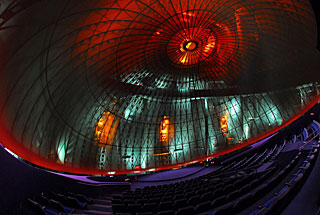 |
| Tycho Brahe Planetarium, Copenhagen, Denmark |
|

|
The Tycho Brahe Planetarium is educational entertainment for the whole family. The permanent exhibition, The Active Universe, holds the answers to some of the mysteries of space, while the 1000 m2 dome-shaped screen in the Space Theatre delivers exceptional movie experiences in IMAX and 3D format. Each show starts with a brief introduction to the current night sky. The Tycho Brahe Planetarium is unique in its combination of astrophysical knowledge and entertainment. A combination that especially suits the primary and high school students who visit the Tycho Brahe Planetarium to learn more about astronomical phenomena.
|
 |
| Ars Electronica Center, Linz, Austria |
|
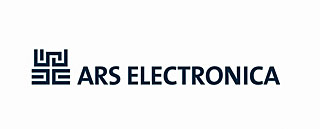
|
The Ars Electronica Center has been setting the standard ever since the original facility opened in 1996. This prototype Museum of the Future used the new media in unprecedented ways and, with its superb exhibitions and ground-breaking methods of presenting and imparting content, made a name for itself worldwide. Relaunched on 2 January 2009 after remodelling, the new Ars Electronica Center has continued to blaze innovative trails into the future.
The Museum of the Future’s activities are currently centred on the astounding progress being made in the life sciences and are designed to appeal to everyone, from experts to the general public, from kids to seniors alike. Neither an art gallery, nor a science centre, the Museum of the Future has carved out a totally unique place for itself on the leading edge of modern culture. At the same time, the museum’s mission is to serve as a setting for visitors to undertake hands-on experimentation and to enjoy eye-opening experiences. Ars Electronica doesn’t just stage exhibitions; its open labs, each focused on a core theme, and interactive scenarios provide infrastructure for curious minds to embark on journeys of discovery.
|
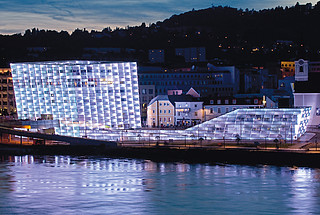 |
| Zeiss Planetarium Bochum, Bochum, Germany |
|

|
Bochum Planetarium is one the major planetariums in Germany, attracting more than 150 000 visitors per year. Founded in 1964, it has since remained at the forefront of technological development. A major upgrade took place in 2010, when the state-of-the art full-dome video system Velvet was installed. The system provides a perfectly black — velvety! — background allowing more than 9000 stars to shine brilliantly. The starry sky, provided by one of the best opto-mechanical projectors in the world, the Universarium IX, is freely combined with breathtaking video sequences allowing visitors to completely immerse themselves in the fascinating beauty of space. The Universe in all its dramatic splendour — from stunning flights through our Solar System to captivating images of the most distant galaxies — takes centre stage on the huge dome with a diameter of 20 metres and a seating capacity of 260. The programme includes astronomical shows for adults and children, as well as music shows, live concerts, literature readings and other cultural events. Many shows are produced in-house, guaranteeing a unique experience.
|
 |
| Hamburg Planetarium, Hamburg, Germany |
|

|
Planetarium Hamburg — opened in 1930 — has an exceptionally long and unbroken tradition of bringing the Universe to people of all ages in a notable earthly setting. It is situated in a historic water tower, located as an architectural landmark right in the middle of Hamburg's green Stadtpark. With around 350 000 visitors each year, it is one of the most successful planetariums worldwide and currently one of the most advanced. Its unique visualisation system combines the latest fibre optic Zeiss-Starball with several compute-clusters for Science Visualisation in Astronomy and Geosciences (Realtime and Prerendered Playback). Skyshows, virtual trips to the cosmos for families and children, lecture series, live star concerts and cultural programmes are presented in a 253-seat “surround sky-theatre“. In 2011 Planetarium Hamburg became the first planetarium in Europe to use Fulldome-stereoscopic 3D technology.
Image credit: Tim Florian Horn
Copyright: Planetarium Hamburg
|
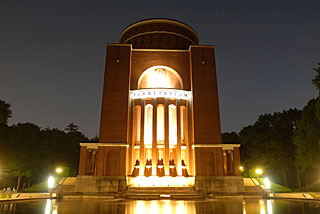 |
| Royal Observatory Greenwich, London, UK |
|

|
The Royal Observatory Greenwich (ROG) is one of London’s most popular visitor attractions. Founded in 1675, the ROG has a long history of astronomical research and is the site of the Prime Meridian as well as the origin of Greenwich Mean Time. Now the Observatory’s historic buildings house a museum of astronomy, navigation and timekeeping as well as the Weller Galleries of modern astronomy and the award-winning Peter Harrison Planetarium. The ROG runs an extensive programme of astronomy exhibitions, talks and schools workshops and also provides astronomy expertise for the UK media.
|
 |
| Vienna Planetarium, Vienna, Austria |
|

|
The Vienna Planetarium is the largest planetarium in Austria, and has been located in Vienna's most famous entertainment and recreation area — the Wiener Prater — close to the city centre since 1964. After a major upgrade in 2001, the brilliant starry sky is now projected on the 21-metre dome by a Zeiss Universarium MIX, which is known as one of the best opto-mechanical projectors worldwide. The planetarium has a seating capacity of 190 and is visited by about 60 000 people a year, with school groups, families with children as well as adults all forming important target groups.
Together with the historic Kuffner Observatory, located on the outskirts of Vienna, and the Urania Observatory in the city centre, the Vienna Planetarium is part of the Vienna adult education centre (Wiener Volkshochschulen). The programme comprises shows, classes, workshops and talks dealing with astronomy, astrophysics and space sciences as well as cultural events and performances.
|
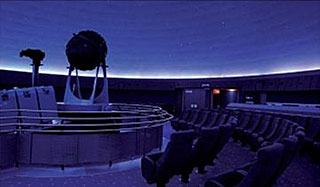 |
| The Technical Museum of Vienna, Vienna, Austria |
|

|
Situated on approximately 22 000 sqm, the Technical Museum of Vienna offers quite exceptional insights into the world of technology. Unique exhibits from the past to the present make the museum a showroom for exciting technical developments. Embedded in the protected art nouveau atmosphere of the Technical Museum of Vienna, unique objects from the past and the present tell of the lives and works of famous personalities. The Etrich II Taube (or Dove), for instance, takes us back to the pioneer era of engine-powered flights; the Mercedes W 196 Silberpfeil (or Silver Arrow) recalls its striking adventures and the imperial saloon car used by Empress Elisabeth looks back on numerous journeys with its royal owner.
Films, texts and interactive experiments illustrate the relation between technology on the one hand and society, economy and culture on the other. Multimedia presentations provide an individual approach towards technology and make a visit to Technisches Museum Wien an exceptional experience for everyone.
|
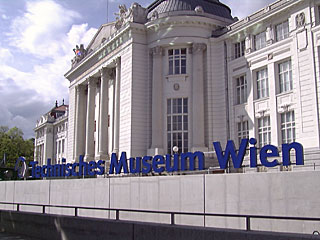 |
| Centro de Astrofísica da Universidade do Porto, Porto, Portugal |
|
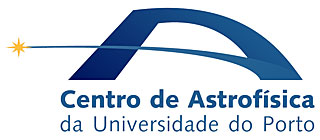
|
The Centro de Astrofísica da Universidade do Porto (CAUP) was created by the University in 1989, as a private, non-profit, scientific and technical association, and is recognised as a public utility. It is the largest astronomy research institute in Portugal, and has been evaluated as “Excellent” by international panels since 2000. Among its statutory objectives are the development and promotion of astronomy, through research, training at graduate and postgraduate levels, outreach and support of science education in schools.
CAUP was a pioneer in science outreach in Portugal, running several public programmes promoting scientific culture. The longest running is a portable planetarium that has been visiting schools since 1990, and which has presented astronomy to more than 250 000 school children. Since it opened in 1998, CAUP has shared the building with the Planetarium of Porto, an infrastructure specifically built to join a research institute with an outreach centre. CAUP is responsible for the planetarium's scientific management, including the production and presentation of planetarium shows, hands-on activities, and public events such as exhibitions, lectures or telescope observing sessions.
|
 |

























